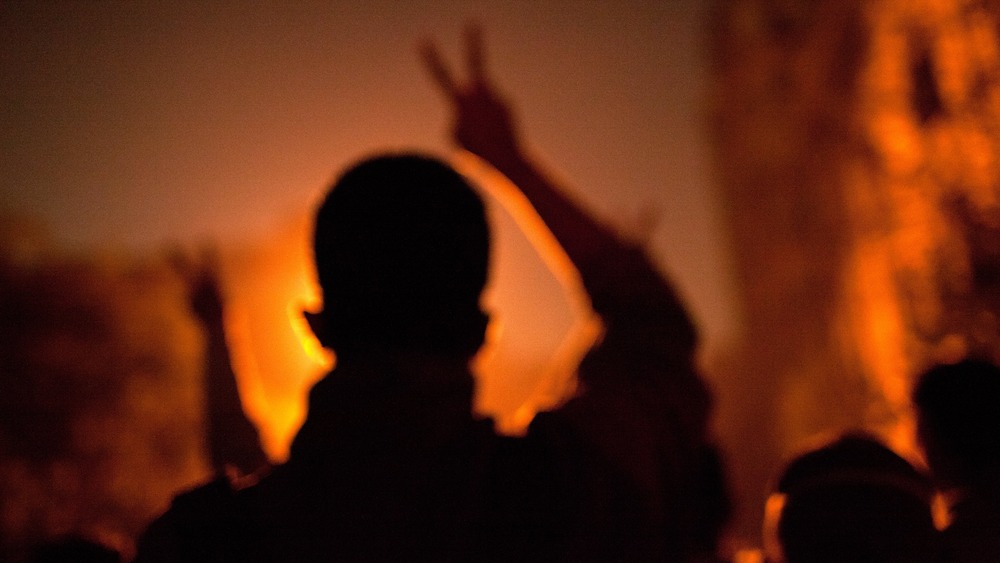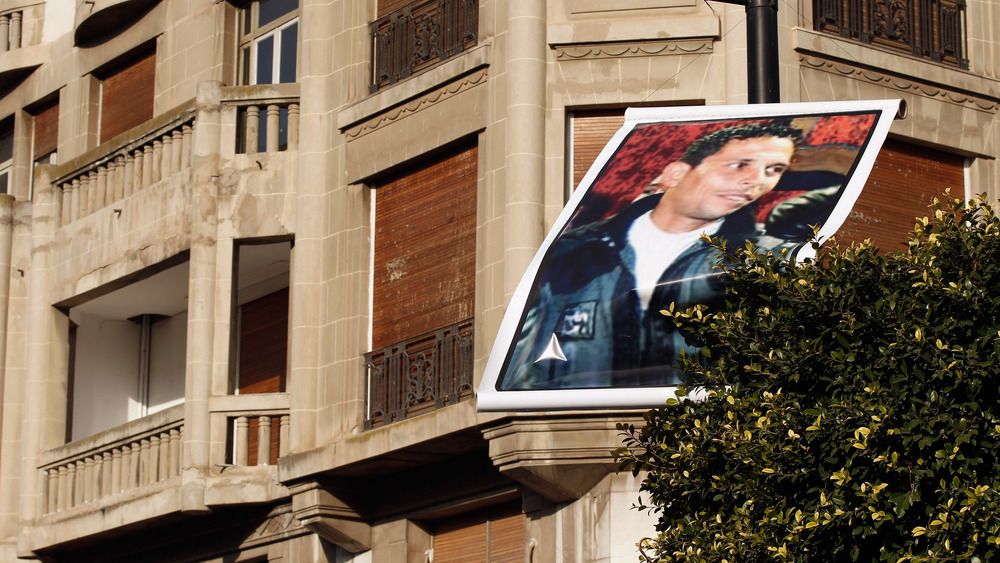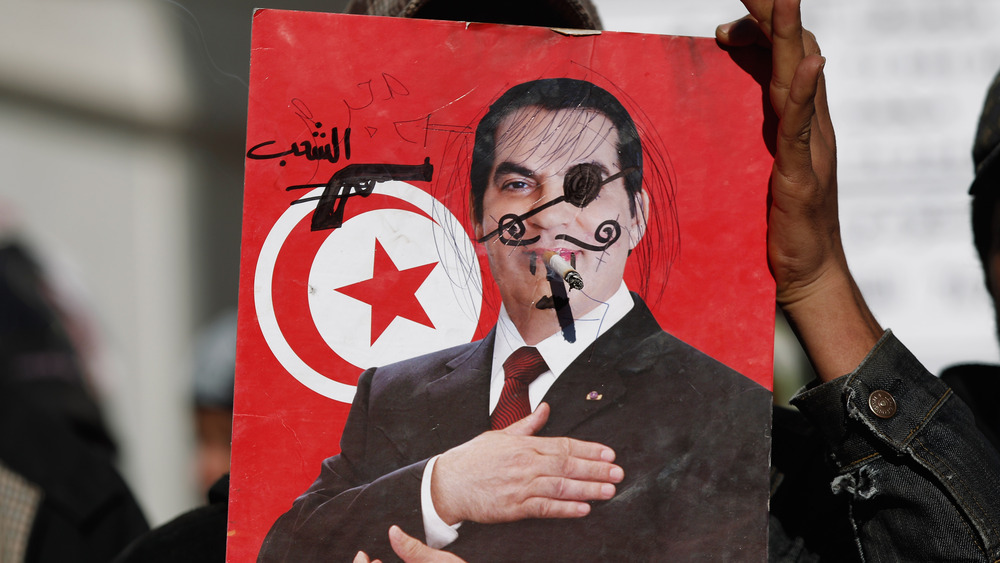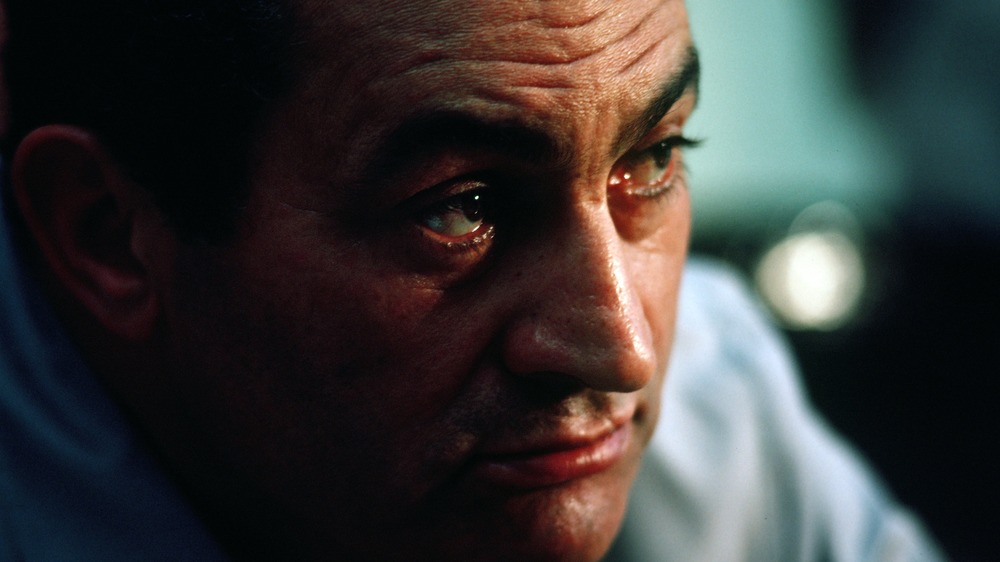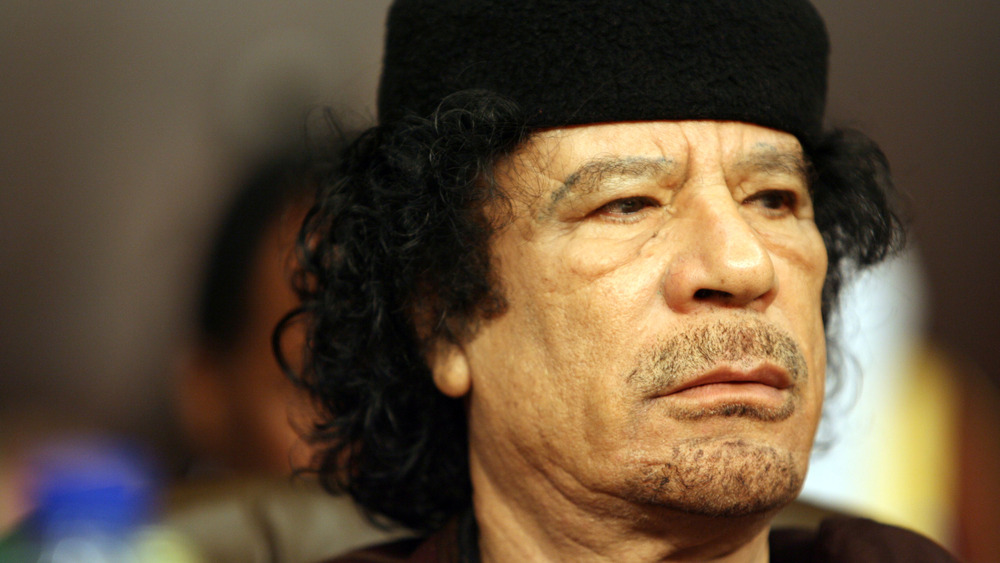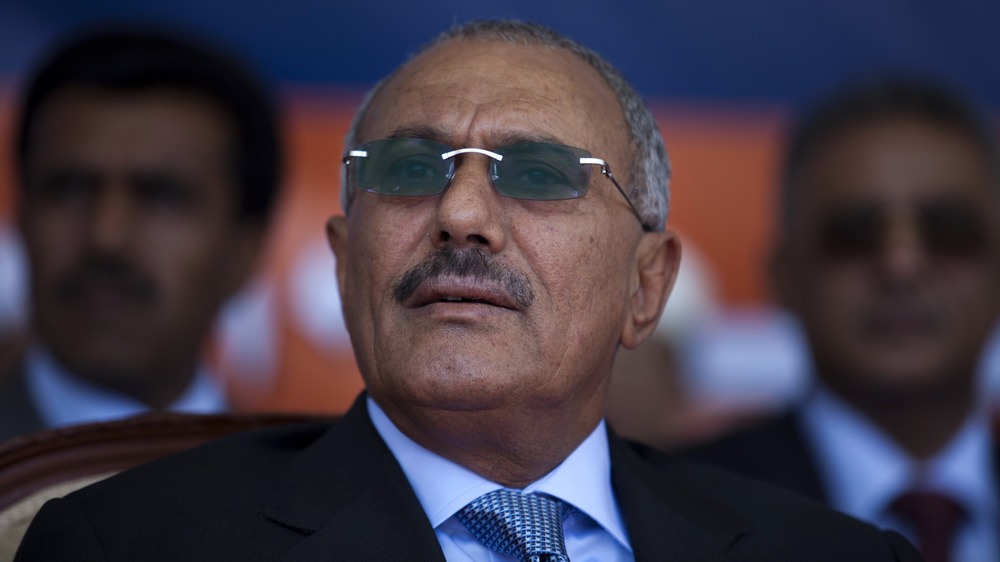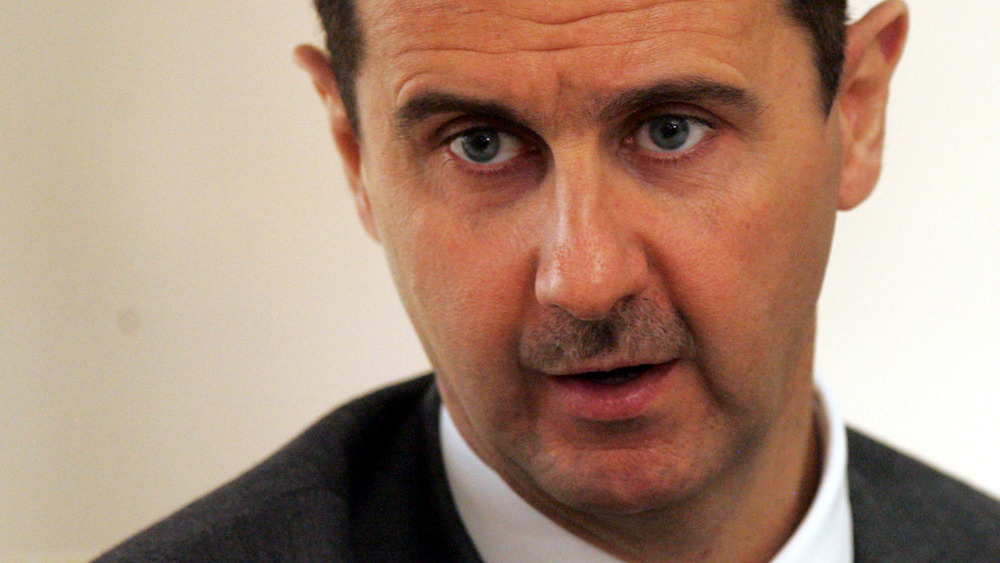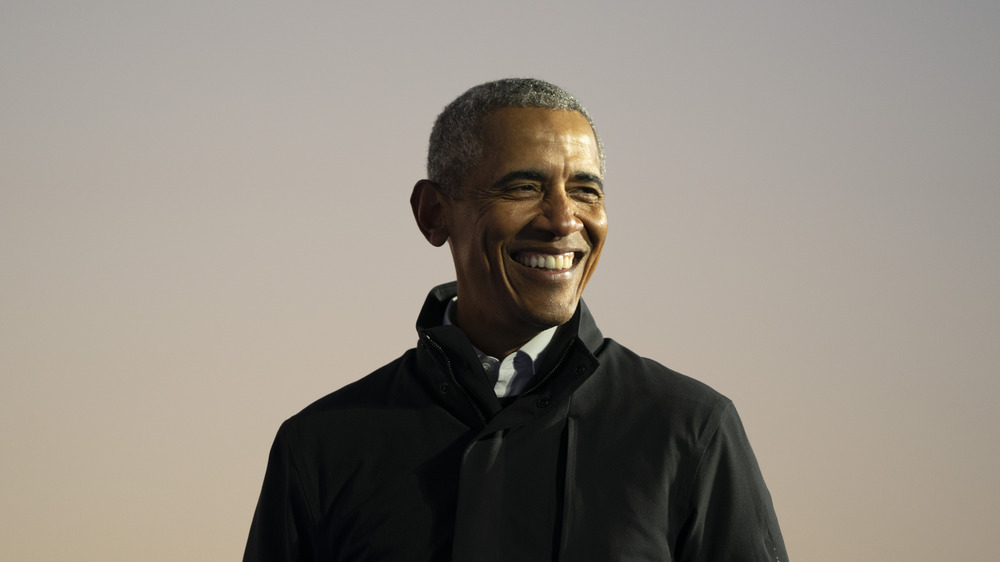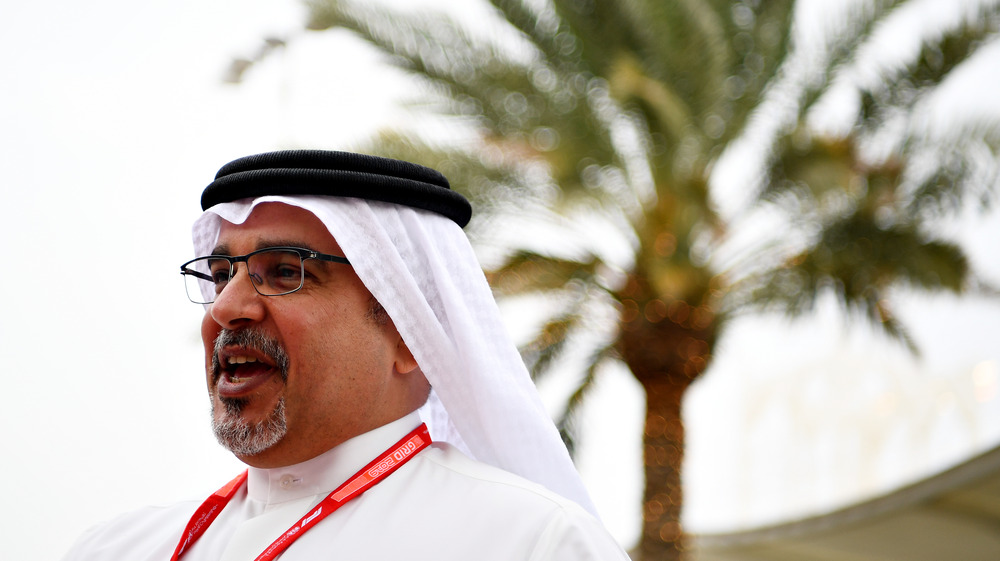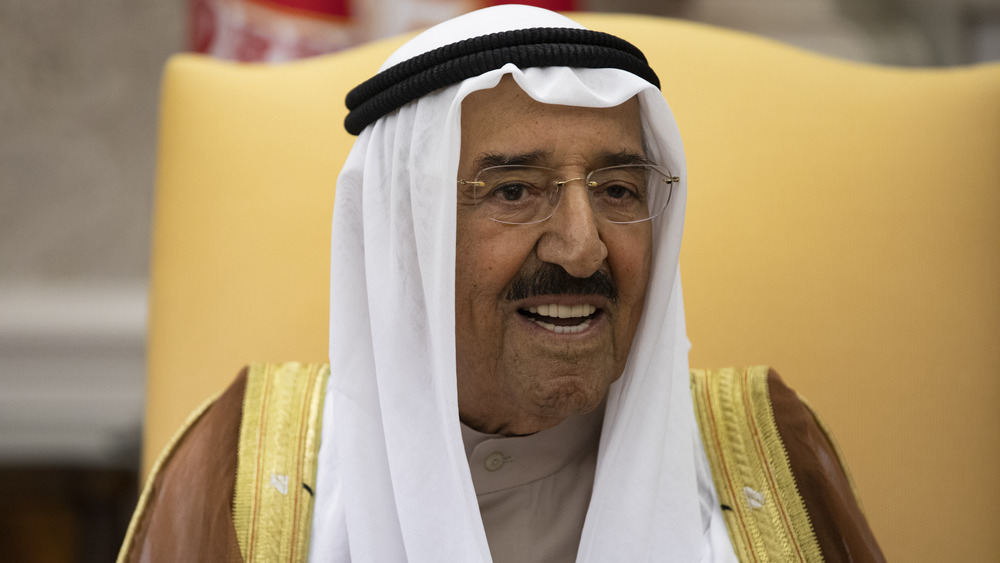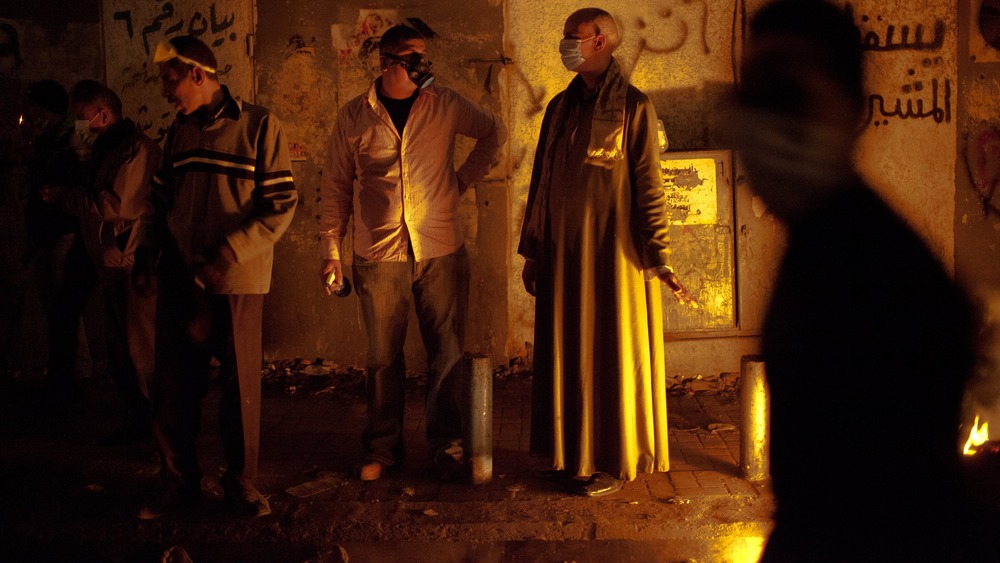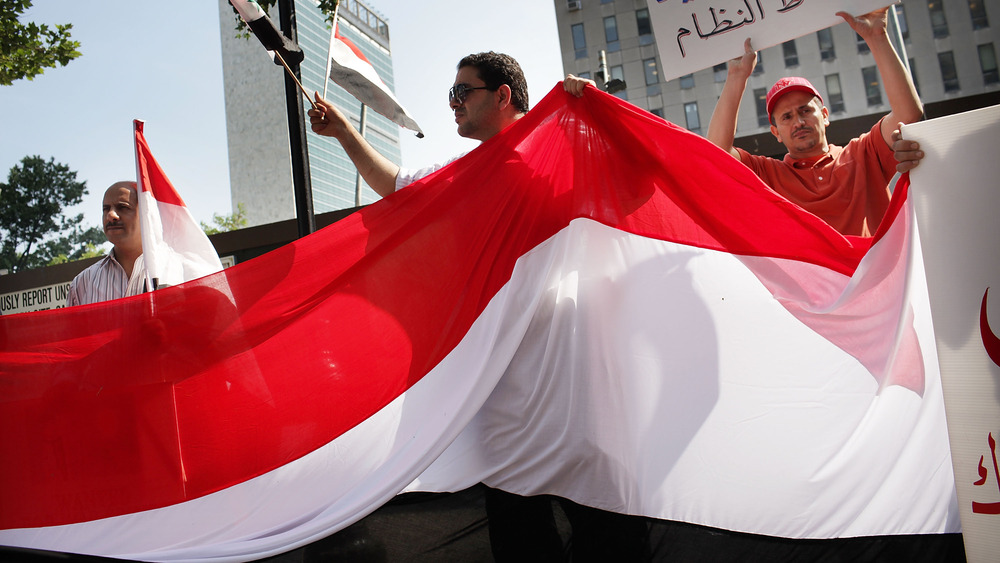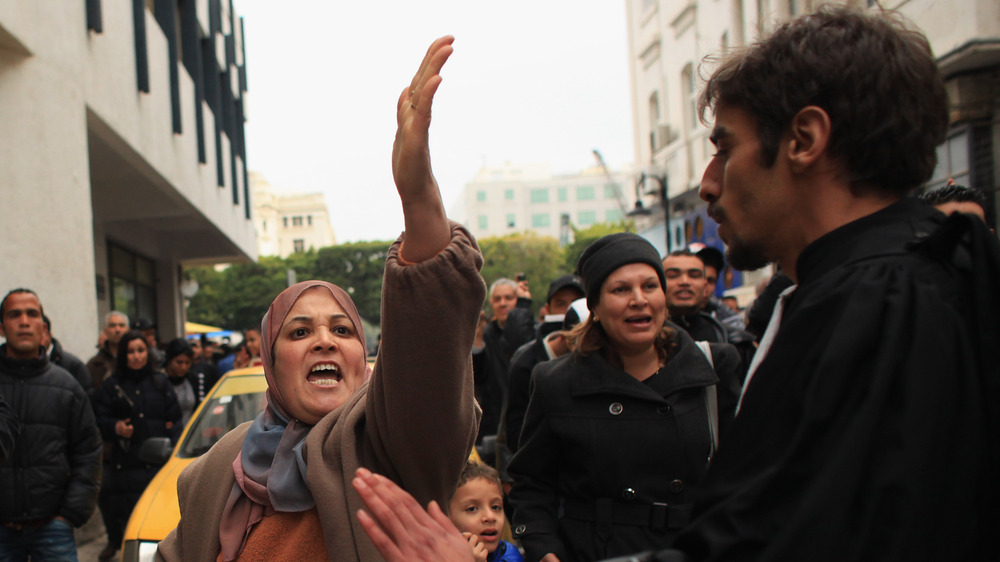The Tragic Truth About The Arab Spring Protests
The Arab Spring protests from 2011 were a major turning point in the Middle East. According to The Guardian, this revolution began with a small incident in Tunisia that grew by leaps and bounds in a short period and ended up sending shockwaves throughout the region, leaving many by surprise. The core idea was simple — to challenge authoritarian rulers and show them that members of the public weren't happy and wanted to make sure that their governments knew about it.
It must be said that it wasn't possible for most to fathom the full extent of the protests until much later. The fact that the Arab Spring had an impact on several regions — from Tunisia to Syria, Bahrain, Jordan, Libya, Lebanon, and Egypt — is hard to overlook. Additionally, some countries in the region faced a lot more violence than their counterparts during an uncertain period. Everyone was shaken up by the protests, though. They weren't insignificant in the least and are spoken about even today. Here's a glimpse into some of the most tragic takeaways from the protests.
It all started with a Tunisian street vendor
In December 2010, Tunisian fruit seller Mohamed Bouazizi decided to make his discontent public, and in an act of defiance against local authorities, immolated himself. As per The World, Bouazizi was distraught and tired of being mistreated by those in power. Sadly, he didn't survive and passed away days after the incident. He was only 26-years-old. His death was an eye-opener for many. What's clear is that the starting point of the Arab Spring protests was Bouazizi's decision to set himself on fire and stand up against the authorities.
However, for Bouazizi's family, the memory was hard to let go. His sister, Leila Bouazizi, mentioned that her brother was a simple person. They lost their dad when they were young and had to find ways to make ends meet. While their mom spent her days at a farm to earn a livelihood, Mohamed started selling fruits to support her.
Things got complicated when local officials started troubling the fruit seller, insisting that he needed to get himself a vendor's license. This was really difficult for him, and he could not afford to pay for it. The authorities would often hit back at Mohamed by taking away his fruit. On Dec. 17, 2010, Mohamed felt like he'd had enough. He chose to retaliate in an act of self-immolation, and the footage was captured by those who were on the scene. His despair didn't go unnoticed, and people started protesting, demanding access to better jobs in Tunisia.
Tunisia's dictator was forced to flee
As per History, Tunisia's protests started being referred to as the Jasmine Revolution. The protests weren't tame at all and were intense enough to cause rifts within the government. In fact, the country's president at the time, Zine El Abidine Ben Ali, was forced to leave the country and seek refuge in Saudi Arabia. Before the Jasmine Revolution, he was the ruler of Tunisia for two long decades and was a dictator by most accounts.
According to a Gallup report, a lot of Tunisian citizens felt in 2010 that they would have a better quality of life without Ben Ali calling the shots. They were dissatisfied on several fronts, including the quality of local infrastructure, the overall cost of living, access to common services, and more. The one good thing that came out of the Jasmine Revolution was the fact that Tunisia did notice things improve after Ben Ali's exit from the country. As illustrated by History, Tunisia witnessed its first ever parliamentary elections in October 2011.
Egypt's fight was bittersweet at best
While things were looking up in Tunisia, the situation was a lot more chaotic in Cairo, Egypt. According to The Washington Post, protesters gathered at Tahrir Square on Jan. 25, 2011. This was an act of solidarity against their authoritarian ruler, Hosni Mubarak. The Egyptians were inspired by Tunisia's fight and wanted to bring about change in their country.
However, they were forced to endure a series of attacks from the authorities, as well as those sections of the population that were in favor of the ruling party. It only took weeks for Mubarak to cave in to the pressure and abandon his post. While things looked good in the beginning, Egyptians didn't know what was coming for them. Years after Mubarak resigned, the country found itself struggling again after its ex-president, Mohamed Morsi, was ousted in 2013. Morsi had managed to win the elections after Mubarak was removed but didn't last long (via The Guardian).
As per Al Jazeera, there was no serious democratic candidate to take over six years after the protests first erupted, which meant that a military officer was holding down the fort. Egypt repeatedly found itself in a state of chaos as the country witnessed a plethora of human rights violations for years. In fact, there was a military coup in 2013 that put Abdel Fatah al-Sisi in power, and thousands of Egyptians were imprisoned and silenced.
It led to unrest in Libya
As pointed out by The Guardian, Libya succeeded in some ways but couldn't ultimately salvage itself. The country's irate citizens chased their dictator, the disgraced ruler, Muammar Gaddafi, and killed him. His defeat was celebrated across the country. This was a major moment as Gaddafi had terrorized the country for four decades. He was narcissistic and not afraid to exercise cruelty against his own people, sending armed men to attack protesters in Benghazi.
Things got so bad that NATO declared a no-fly zone in Libya and worked with rebel forces until Gaddafi was overthrown. As per France 24, despite the fact that Libya's citizens were able to overthrow Gaddafi, respite was nowhere in sight as they found themselves battling a civil war. The country's citizens ended up lashing out against each other, with groups in the east fighting their countrymen in the western parts of Libya. Additionally, as per the Conversation, a crazy number of groups were involved in the battle for Libya's oil riches, leaving the country in a state of unrest and turmoil.
Yemen was broken
When the Arab Spring first took hold in Sana'a, Yemen, there was hope and promise of a better future. As reported by The Guardian, Yemenis were motivated to fight for their rights, banding together as revolutionaries, singing and reciting poetry during the Arab Spring protests. They managed to get rid of the former President Ali Abdullah Saleh in 2012. A Yemeni-American, Raja al-Thaibani, who was a part of the revolution back then, was quoted as saying, "It was so powerful and intoxicating, that feeling that for the first time ever, people in Yemen were unified. It didn't matter what your tribe or religious or political affiliation was, the gender dynamic, we all showed up together, week after week."
She added that it was obvious that Yemenis were divided into different factions shortly after the revolution, but many were not ready to acknowledge that. Things disintegrated rather quickly when a militant group called the Houthis showed up in the country's capital city, leading to violence and forcing the interim president, Abdrabbuh Mansur Hadi, to run away to Saudi Arabia in 2015.
Things have rapidly declined in Yemen over the years. According to the UN, the Yemenis are living through the "worst humanitarian crisis" in the world and are being forced to confront several challenges, such as widespread illness and suffering.
Syria was left shattered
Syria faced an incredibly harsh outcome after the protests. The country, as per the BBC, ended up battling a civil war that erupted between different groups in the country and the government that was led by President Bashar al-Assad. Violence became an everyday occurrence, and scores of people were forced to leave their homes in a bid to escape the war. A former student, Majdy Al-Kassem, told the BBC that he had to get away from Syria during the Arab Spring because his life was at risk after joining the protests. He made the difficult decision to let his pregnant wife stay back. He explained that things got progressively uglier during the war. He said, "In the first six months protesters were not armed, but the security forces started to shoot at people and come to their houses to arrest them."
As illustrated by the United States Institute of Peace, Syria's battle has been one of the toughest and most challenging ones following the Arab Spring. The Assad regime almost lost control twice but somehow managed to get back on its feet. According to Humans Right Watch, Syria's citizens continue to be subjected to widespread abuse, and they don't even have access to basic essentials such as food and healthcare. Things remain bleak.
The protestors didn't receive adequate support from other countries
As per the The Washington Post, while the Arab Spring most definitely managed to cause a ripple across several countries in the Middle East, it didn't quite fully succeed, and one of the major reasons for this was the fact that protesters didn't receive the support they required from important players who could've managed to have a solid impact. For example, Barack Obama and administration didn't step up at a time when it was crucial. They refused to speak up for Syrians and couldn't do anything to help Libya either. As explained by The Atlantic, Obama's team did promise to offer a small amount of financial assistance after the protests but didn't really help out otherwise. Many experts believe that a powerful force such as the United States could have had a definite impact if Obama has chosen to act back then.
Additionally, other strong elements, such as the rulers of Saudi Arabia and the United Arab Emirates, refused to help as well and were insecure about what the protests could do to their own governments. Basically, those who could've led the winds of change and make a difference chose to step away at this point and distance themselves from the protests while safeguarding their own interests.
Many activists were jailed in Bahrain
As highlighted by NPR, if there's one country that couldn't make its voice heard at all during the Arab Spring protests, it was Bahrain. Its protests were simply squashed, and its citizens were not allowed to express how they were feeling. Toby Jones, a professor at Rutgers University who specializes in Middle Eastern history, emphasized that Bahrain was let down in a big way. He said that major countries such as the U.S. intended to let things play out the way they did. Jones said, "Bahrain is ground zero for the Arab Spring in the Persian Gulf. And the United States has chosen sides. It has decided that it wants to see the Bahraini regime survive and endure."
He added that these decisions would have a definite impact on not just the relationship that the U.S. shares with Bahrain but also with another Middle Eastern country, Saudi Arabia. What exactly happened during the Arab Spring in Bahrain then? Well, a crackdown was imposed without a second though, and thousands of citizens were gathered together and detained. Some were even punished.
Things were murky years after the protests, as per the nonprofit organization, Amnesty International. It stated that citizens were effectively not allowed to voice their opinions at all, and many remained in jail, many of whom were activists and political figures.
It didn't have the desired impact in Kuwait
According to Human Rights Watch, Kuwait decided to act rather harshly after the Arab Spring protests and handed out convictions and prison sentences in 2017 to those who were found guilty of "assembly and speech." Over 60 people were sentenced by the court, and the imprisonment sentences were as long as nine years. Many were accused of "using force against police," while others were told that they participated in a public gathering that was "unlicensed."
The Middle East director at Human Rights Watch, Lama Fakih, criticized the move in a statement. She said that this was an intimidating move that was used by the Kuwaiti government. She explained, "Regulating protests is one thing, but sentencing people to prison for offending the authorities only serves to intimidate others from speaking out."
What exactly went down in 2011? Well, during the Arab Spring protests, several individuals chose to step into the parliament building as many others stood outside, accusing their Prime Minister Sheikh Nasser al-Mohammad al-Sabah of corruption. As highlighted by CNN, at that point, in November 2011, the emir did accept the prime minister's resignation, but things were short-lived, and the protesters eventually suffered for speaking up against the government.
Many lives were lost during the Arab Spring
As reported by the Associated Press, hundreds of thousands of lives were lost during the Arab Spring protests. A huge portion of those casualties were from Syria's civil war, coupled with a lot of violence in Iraq and Libya. An expert on the Middle East, Shadi Hamid said, "We can expect democratic transitions to be messy, chaotic and sometimes bloody, but this is worse than even the worst expectations."
He further added that one of the toughest lessons for many who were involved in the movement was learning that choosing to protest peacefully did not necessarily mean that the transition would be democratic or free of chaos. Additionally, the uncertainty and violence made many people wonder whether democracy was even worth the trouble, considering the fact that there were many painful lessons that members of the public had to learn from the protests.
The Arab Spring is downplayed
Sadly, the Arab Spring movement is often downplayed these days, and not many people understand what a significant movement it was. The New York Times notes that according to an expert, Noah Feldman, who wrote the book, The Arab Winter, it's possible that people are starting to downplay the Arab Spring movement and feel that no country except Tunisia managed to see change. Everyone else who was involved in the movement didn't quite benefit as much, according to those who argue that the protests weren't exactly impactful and did more harm than good.
However, Feldman highlights the fact that so many people who chose to speak up against dictators and authoritarian regimes shouldn't be discounted. While it's true that many things happened later, and the aftermath was tragic for a lot of countries, the Arab Spring movement did prove that many people weren't and aren't willing to be silenced or intimidated.
As per The Washington Post, Feldman thinks that this protest has set the way forward for more movements in the future, and that a second wave of protests will happen again someday.
Many Tunisians are unhappy
While on the surface it may feel like Tunisia is on a roll in terms of achieving its democratic goals, many of its citizens aren't quite convinced. According to a 2020 Guardian report, many Tunisians now lament the fact that the Arab Spring movement started in their country. In fact, Mohamed Bouazizi, the fruit-seller who started the wave of protests, is a disputed figure in the country. His family has immigrated to Canada. A lady on a street was asked recently by a journalist about her thoughts on Bouazizi as she looked at his photo. Her statements were rather harsh. She said, "I curse at it. I want to bring it down. He's the one that ruined us."
This isn't an uncommon sentiment in the country, sadly. While the country is a democracy, its citizens are far from happy these days, and many have resorted to joining jihadi, militant groups. As far as quality of life is concerned, Tunisians remain as unhappy as ever as they struggle to make a living and find a way to survive.
